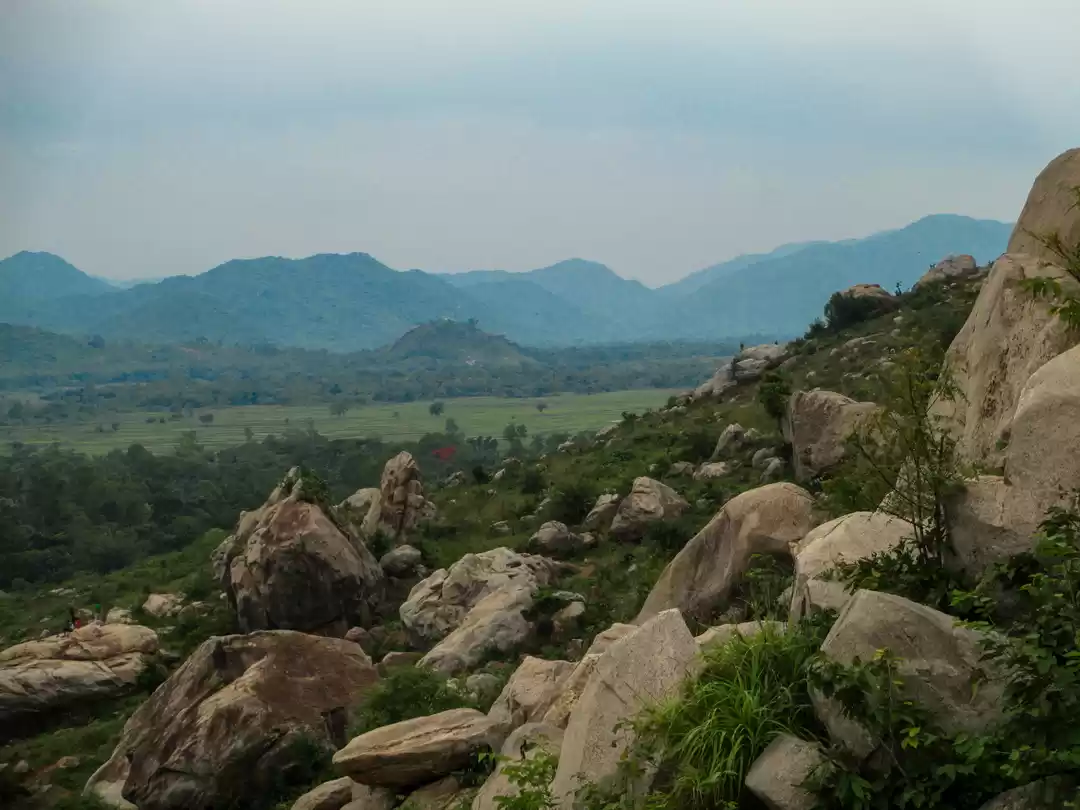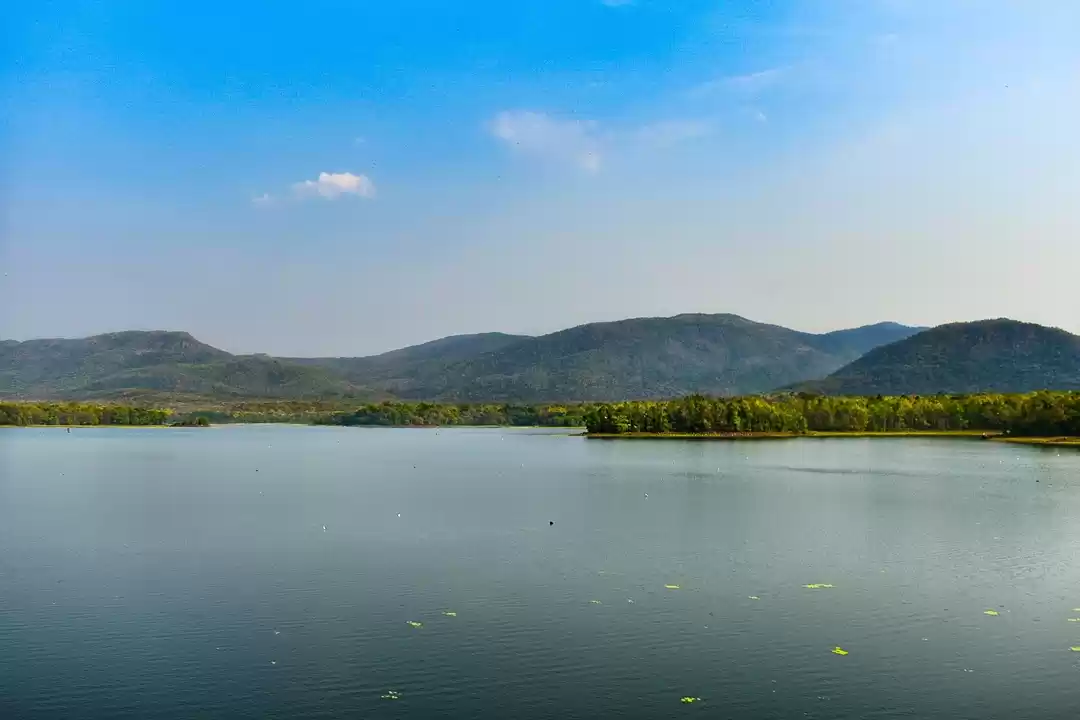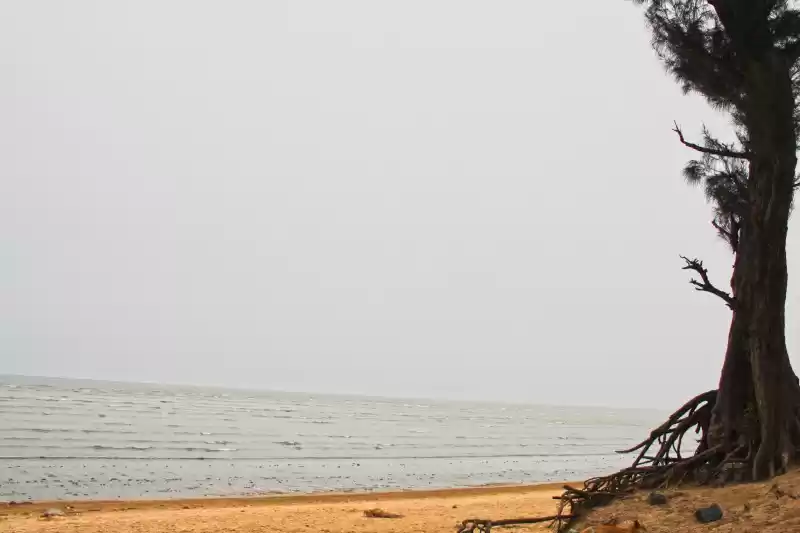
After staying confined within four walls for almost 8 months due to the lockdown for Covid -19 pandemic, I was desperately looking for an escape from home, when a FB based all-women travelling group came up with a short trip to the nature trails of Odisha. It was a 3 N 4 D trip from Howrah to Howrah covering Kuldiha Wildlife Sanctuary, Similipal National Park, Panchalingeswar, Devkund waterfall and Chandipur sea beach.
Day 1
Getting there :
On the scheduled day, I reached Howrah Station by 7.30 am and went straight to the New Complex as our train Phalaknama Covid Special ( all the trains running after the lockdown period are named as Covid special) was supposed to depart from 21 No. Platform at 8.30 am. At the beginning of the platform, I met 4 others of our group, three of them I met for the first time and got introduced to each other. The train had already been on the platform, so we 5, boarded the train and sat in our respective seats. Gradually, the rest of the group arrived and the train started rolling on time. We, 10 lovely, energetic women, reached Balasore, the nearest Railway station by 11.40 am.
After taking a groupie outside the station, we enthusiast travel freaks boarded the cab that transported us to the Hotel Leo Sai Palace at Soro. It took almost one and half hour to reach there. The cosy rooms of that hotel were our stop for the next 4 days.
After a quick freshen up followed by a sumptuous lunch, we were all set to visit Panchalingeswar and found ourselves at the parking lot of the temple at the foothills in a while.
Panchalingeswar Temple :
Panchalingeswar is a shrine located on a hilltop near Nilgiri that houses five natural lingas in a rock crevice under a perennially flowing stream. One can touch them by hand lying on the chest over the rock by the stream.
A few walks away from the parking lot, the main entrance of the temple followed by a flight of steep steps that goes through the dense forest of tall trees and scattered huge rocks with small streams flowing over it.
We all were in a hurry as the temple was about to close. So, hurriedly started climbing up the stairs, but the beauty of the surroundings often made us stop. The leafless dry branches around us were looking inexplicably beautiful in the fading afternoon light that can neither be captured by camera nor be described in words. We were taking frequent pit stops to admire the beauty, gasping for breath and of course, for posing as well.
It was almost 4.30 pm when we reached the top. The shrine was remain closed due to the COVID pandemic, You can see the narrowly flowing spring from the distance. Touching was not allowed by then. What a pity!
It was my second visit to Panchalingeswar. The first time I went during the rainy season. Then the stream was flowing furiously, It couldn’t be possible to touch the lingas without getting drenched entirely. So I didn’t try this out then. I thought during the winter, the stream becomes dry and I could be able to touch the lings. But I got no luck this time also.
Anyway, we offered puja and took blessings, posed for group pics on the backdrop of a beautifully decorated colourful wall near the shrine.




On the way back, we stopped by the following temples one by one. Emami Jagannath temples, Kheer Chora Gopinath temple, Jagannath temple and Nilgiri Rajbati.
We didn’t get into the first two spots as they were closed by 6 pm due to the ongoing corona pandemic. So took a few pictures from outside and went to visit the latter.
Jagannath temple :
This temple is sitauted at Raj Nilgiri, Balasore. It's a beautiful temple dedicated to Lord Jagannath.
Nilgiri Rajbati :
Nilgiri Rajbati is situated just beside the Jagannath temple.

After getting back to hotel, we were served with mouth-watering pakodas followed by a little chitchat and then having a delicious dinner, we crashed on the bed and slipped into the kingdom of sleep in no time.
Day 2
Kuldiha Forest and Devkund waterfall
The next morning, we started late as the first day was quite hectic. We woke up late and after having breakfast with Chole and Puri, hit the road again.
Our first stop was Kuldiha Wildlife Sanctuary
Unlike other wildlife sanctuaries, Kuldiha forest allowed private vehicle inside the jungle but you need to get a permit from the 'Office of the Nilgiri Forest Range Office' from 9.30 am to 1 pm. After getting permission and tickets for the camera, we set off on our safari along the narrow forest trail.
Things to do at Kuldiha :
Go for spotting wildlife and watching birds :
Teeming with various wildlife that includes elephant, leopard, giant squirrel, bison, gaur, kuldiha forest is a perfect place for wildlife enthusiasts. It is also home to a wide variety of birds including Indian peafowl and hornbill that makes this forest a paradise for bird watcher and birder.
Drop at Rissia Nature Camp
Situated amidst the jungle, this camp is a beautiful place to stay and unwind. The camp comprises well-furnished tents with solar-powered light and a beautiful sitting arrangement under the canopy of dense foliage where you can sit and enjoy the serene beauty of the forest. While strolling around the camp, we spotted a pretty white rabbit, may be tamed, and we all made fun posing and playing with it. The rabbit is too calm to do anything.
Enjoy boat ride :
There is a vast lake nestled in a picturesque backdrop, a few walks away from the campsite. The boating facility is also available there. Boating in a serene lake surrounded by hills and greenery itself a unique experience and if the lake is full of thousands of bright pink lotus flowers then, floating through these flowers is an out of the world experience. As we were travelling in January, the lake is covered with full-bloomed lotus flowers. Owing to short of time and lack of an adequate number of boats, some of us including me only able to enjoy the ride while others were admiring the beauty standing on the bank.




Stay at Forest Rest House :
There are two forest bunglow inside the sanctuary - one is Kuldiaha FRH and the other is Judachua FRH that can be booked through the Odisha Tourism office, Kolkata. There is a salt lick near the FRHs which is frequented by a herd of elephants, gaur, deer and bison. You also can stay there to enjoy a morning safari spotting various wildlife and birds.
Gaze the beauty of the forest :
Kuldiha is a mixed deciduous forest characterised by mainly sal trees but shimul, sirish and other large trees are also found in abundance. Driving along the red soiled road under the canopy of these tall trees was an amazing experience. You can feel the silence of nature that sometimes broken by the rustle of fallen leaves and chirping of birds. One strange thing we noticed during safari that the forest is filled with mount of termites in various shapes and sizes.
By the time, we hit the tarmac road again towards the Devkund waterfall, the sun shining brightly overhead and we were feeling extremely hungry as it was almost 2 pm. We were travelling through the narrow roads almost empty.
Hence, if you are on a day trip to Kuldiha, take sufficient dry foods and water bottles because except tea or snacks near the main FRH, no foods available inside.
Devkund waterfall
After an odd two hours drive, we reached the Parking lot of the waterfall from where we had to start the journey on foot. The place was overcrowded. Several vendors selling cucumbers, muri masala and chat. We bought some cucumbers, muri and started trekking while munching this.
A couple of years back, when I visited the place during monsoon for the first time, the trail was almost empty, wet and surrounded by greeneries. This time, the forest trail looked completely different. The track is filled with dust, trees were leafless, branches became dry. The roadside stream dried up and water algae grew that looked stunning in the afternoon light.
After almost half an hour walked down the path, we reached the Devkund. It was almost 3 pm. After spending some time and posing for uncountable photos, when we were supposed to start for Kalimata temple high up the hill, we got to know that due to covid situation, the temple was closed by 3 pm.
Many of us felt bad although it doesn’t make any difference to me as I went there previously. We went back to the Parking lot following the same trail and after buying some food once more, we started off to the hotel. It was 4 pm by then.
On the way, we stopped once at a roadside Dhaba to have some chowmin as we skipped our lunch for that day. We reached the hotel by 6 pm.


Day 3
Similipal National Park
The next day we woke up as early as 3 am & hit the road by 4 am. One of us was not feeling well but thought to go on after taking medicines. But after some time, her condition deteriorated and she started vomiting, so we got back to the hotel to leave her as she wouldn't be able to take the load of a day trip. It was almost 5.30 by then when we managed to start again.
We were moving speedily along the dark highway. Sometimes the flickering light from the coming vehicles made us frightened. The day broke slowly. We found ourselves going through the blanket of fog. The fog was so dense that visibility was only a couple of hands as a result, we had to slow down. Most of us were in deep sleep. But I was sitting in front, next to the driver. So I was very much awake and enjoy the ride through the fog but sometimes it was really scary. After almost one hour of the journey with fog on and off, the sun rose, the fog cleared and our vehicle gained speed again.
We reached the entrance of the Similipal National Park by 8 am. There is two entry points to the park - Pithabata Check Gate near Baripada and Tulsibari Gate near Jashipur. We entered from Baripada side. The entrance itself is spectacular. There is an Instagram Point just in front of the entrance to get clicked. Once we got permission and hired a guide, we entered the park.
We bought some dry foods from roadside small shops. As we got to know that there was no food option inside the park which was not true.

Things to do at Similipal National Park
Spot wildlife
Similipal National Park and Tiger Reserve is not only home to the highest tiger population but also home to elephants, barking deer, sambals, along with various species of birds and reptiles. At the very beginning of our journey, we spotted an Indian peafowl by the track amidst the bush. After some time, a female Peafowl suddenly appeared on the track but it was too far to capture.
Do visit the Chahala region. It is considered as the wildlife sighting area as it's situated near the core area of the forest. There is a beautiful watch tower surrounded by the eucalyptus trees that offers a great view of the forest. We saw a herd of spotted deer grazing far away.
Spent time in the wilderness
we were not lucky enough to spot any other wildlife but the road trip through this national park was itself very exciting and thrilling. The large trees, green meadows, high plateaus, rivers, streams and exotic flora and fauna made this park an ideal place for nature enthusiasts.
A couple of hours into the journey, we found ourselves going through the dense fog. The entire forest trail was shrouded by the veil of mist. Never thought we could experience such a foggy mystic atmosphere in any other place than mountains.
The beauty of the jungle itself got us overwhelmed at every corner. Predominant with Sal and Shimul ( silk cotton )trees, this park also has a considerable number of Mahuli and other trees and during season the entire forest has turned into red hue.
Visit some of the most spectacular waterfalls
This park is not only bestowed with scenic landscapes, gushing rivers but it is also home to a few thunderous waterfalls.
Joranda waterfall
Situated deep inside the park near core area, Joranda waterfall is surrounded by green vegetation. It's a single drop waterfall and the 19th highest waterfall in India.
Barehpani waterfall
Another spectacular waterfall near Joranda fall is Barehipani waterfall. This majestic waterfall is the 2nd highest waterfall in India and highest waterfall in Odisha. It's two tired waterfall. There is a view point just opposite the fall that offers a grand view of this waterfall and surrounding vistas.
Uski waterfall
This is the only fall in Similipal that can be seen from close distance and even you can take bath there.
Have lunch in the middle of the Forest
Unlike other National Park, Similipal has a Food Point inside the forest run by Local people. Although the food is basic quality but having lunch in a hotel located in the middle of woods was a wonderful experience.



Experience the tribal life
There are small villages inside the park inhabited by tribal community. During safari, you can spend some time with them, talk to them that help you get to know the tribal life of Odisha.
We came out of the park from joshipur side.
Day 4
Next morning we woke up early and after breakfast, went to visit Chandipur sea beach.
Chandipur sea beach
This beach is well known as hide and seek beach as the water recedes almost 5 km away from the shore during low tide and comes back while high tide.
We reached around 9 am. The beach was almost empty. The sea was far away.
You can explore the beach on foot and witness thousands of red Crabs or can enjoy quadruped bike riding.
There are many small shops along the coast selling different sea shell products and handicrafts. We checked almost all the shops and bought souvenirs and other home decor item.
Just in front the beach, there is an OTDC Panthaniwas. This the best place to stay near the beach. It is open to tourists as we went there, had some rest, freshened up. It has a beautiful well decorated garden and lawn to take a stroll around.
We reached Balasore Railway Station by 11.30 am and got the return train to Howrah.













